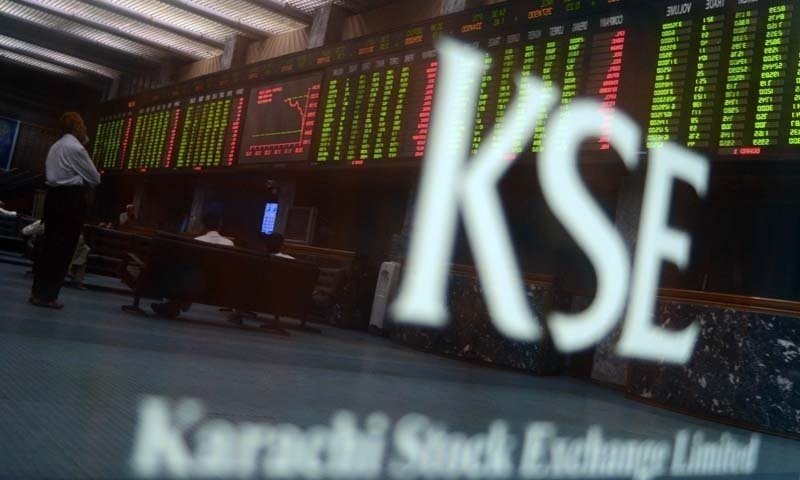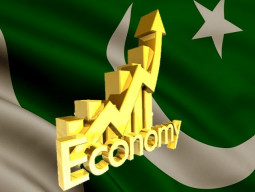

Following a rough ride at the Pakistan Stock Exchange (PSX), traders have managed to earn 10% profit on investment amid a slight recovery in business confidence in different sectors of the economy.
Research houses anticipate the stock market will gain momentum and do wonders in 2020, suggesting current share prices are still comparatively and historically low and offer another 20-25% return on investment as the country is expected to resume economic activities in the new year after achieving stability in the preceding year.
With a little drop of 0.37% on the last day of the year, the PSX benchmark KSE-100 index recovered a net 10% during the year and closed at 40,735.08 points on Tuesday. Earlier, the market had fared poorly in the prior two years - 2017 and 2018.
Topline Research anticipated that the market would pick up momentum and surge another 20% to 49,000 points by December 31, 2020.
Market watch: KSE-100 ends year with 153-point loss
AHL Research appeared more optimistic as it foresaw the benchmark KSE-100 index jump a hefty 25% to 51,000 points in 2020.
The projected gains, if achieved, will still remain short of the all-time high of 52,876.46 points touched on May 24, 2017.
PSX outlook
Positive economic developments, which will strongly support a rally in 2020, include a massive 73% drop in the current account deficit in first five months (Jul-Nov) of the current fiscal year, return of stability to the rupee-dollar parity amid a 5% recovery in the rupee’s value in the first five months of FY20, strong expectations for a notable cut in the benchmark interest rate by the State Bank of Pakistan (SBP) and a significant improvement in the foreign currency reserves to a 19-month high at $10.9 billion.
Moreover, Pakistan is expected to be kept in the grey list of the Financial Action Task Force (FATF) initially and it will stage a comeback to the white list later in the year. The expected issuance of Eurobond and Sukuk in international markets and privatisation of state-owned enterprises will also provide much-needed support to the PSX.
All such developments, and others which are in the offing, will in one way or the other benefit listed firms at the PSX.

The sectors that are expected to lead the PSX rally in 2020 may include banks, exploration and production firms, fertiliser companies and power producers, AHL Research said in a report titled “Pakistan Strategy 2020 - Targeting 51,000; Checkmate”.
It said it had projected the index level for 2020 based on the calculation for earnings growth, justified price-to-earnings ratio and target price mapping.
The expected profit gains for the banking sector on the back of prevailing eight-year high benchmark interest rate of 13.25%, likely surge in international crude oil prices which would be positive for the local listed oil and gas exploration firms, expected improvement in agricultural output and recovery in large-scale manufacturing sectors would trigger price discovery in relevant stocks.
“We believe the market is potentially set for further rerating in 2020 on the back of recovery in corporate profitability, increasing cash liquidity and greater flexibility by the government towards its predecessors,” Topline Research said in a report titled “Pakistan Outlook 2020 - A Year of Economic Resurgence”.
The research house expects the corporate sector to take comfort from a pick-up in aggregate demand, stable currency and decline in interest rate in 2020.
“We are overweight in oil and gas exploration (on the back of undemanding valuations), cement (expected recovery in demand and pricing) and fertiliser (high dividend/yield and sturdy margins),” it said.
Market watch: KSE-100 ends with meagre gain of 39 points
2019 review
The benchmark index eventually managed to post 10% gain in 2019, ending the prior two-year downturn successfully.
The overall market capitalisation at the close of the year stood at Rs7.81 trillion ($50.4 billion) compared to Rs7.69 trillion ($55.4 billion) at the end of previous year.
The drop in return on investment in dollar terms was due to a net 11.5% depreciation of the rupee against the US dollar in calendar year 2019.
Earlier, 2017 and 2018 saw the index decline 15% and 8% respectively, which caused losses of billions of rupees to the stock investors.
The market got off to a good start in 2019, growing by over 12% in the first two months to 41,614.39 points in the first week of February on high hopes that the newly elected Pakistan Tehreek-e-Insaf (PTI) government would give a boost to the faltering economy sooner rather than later.
However, a long delay in the decision on approaching the International Monetary Fund (IMF) to acquire a fresh loan of $6 billion to improve the country’s capacity to make international payments on two counts - imports and debt, free fall of the rupee against the dollar and further increase in the benchmark interest rate badly dented business confidence.
Accordingly, the KSE-100 index dipped 20% to 33,166.63 points by mid-May from February’s levels despite Islamabad eventually agreeing to a staff-level agreement with the IMF for a tough bailout package of $6 billion on May 12, 2019.
The much-needed and long-awaited development brought over 8% recovery in the index that reached 35,974.79 points by the end of May. However, it proved to be a short-lived rally due to extensive depreciation of the rupee and further monetary tightening.
The rupee depreciated a cumulative 55.5% since December 2017 to an all-time low of Rs164.05 to a dollar on June 27, 2019 while the central bank increased the key policy rate by 7.5 percentage points since January 2018 to an eight-year high at 13.25% in July 2019. The rate has been left unchanged since then.
The rough ride pulled the index down to the then five-year low at 28,764.63 points, dropping 20% by mid-August.
However, the return of stability and improvement in the rupee’s value, keeping the key policy rate at July’s level, approval by the IMF board of the $6-billion package and arrival of the first tranche of around $1 billion in July; all helped the market jump to a 10-month high at 41,735.08 points in mid-December 2019.
Profit-booking, however, slightly pulled the index down to 40,735.08 on the last trading session of the year. The net 10% gain in the index in 2019 is not the end of the rally but it is the beginning of a long journey.
Published in The Express Tribune, January 1st, 2020.
Like Business on Facebook, follow @TribuneBiz on Twitter to stay informed and join in the conversation.
1736942026-0/fizza-(33)1736942026-0-405x300.webp)

1736941045-0/fizza-(32)1736941045-0-165x106.webp)
1736940015-0/BeFunky-collage-(53)1736940015-0-165x106.webp)







1732012115-0/Untitled-design-(14)1732012115-0-270x192.webp)
1736844405-0/Express-Tribune-(2)1736844405-0-270x192.webp)










COMMENTS
Comments are moderated and generally will be posted if they are on-topic and not abusive.
For more information, please see our Comments FAQ